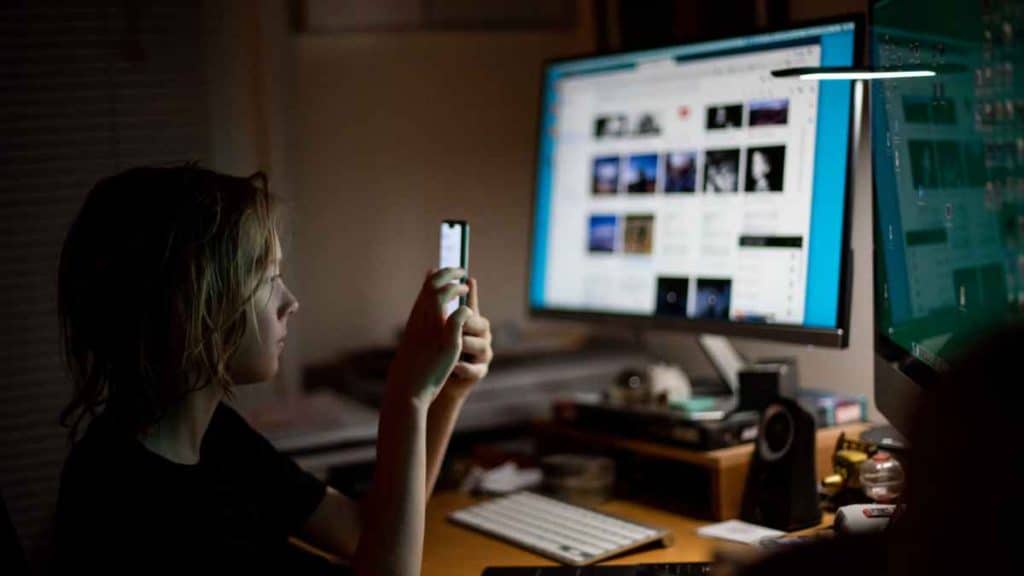In today’s fast-paced, technology-driven world, the omnipresence of screens has become a norm. From smartphones and tablets to laptops and smart TVs, our lives are entwined with digital devices. While these devices have brought tremendous convenience and connectivity, they have also introduced a host of challenges to our overall wellness. In this article, we will explore the impact of excessive screen time on our physical and mental health, and provide practical strategies to strike a balance between our digital lives and well-being.
The Digital Landscape
The digital landscape has transformed the way we work, communicate, and entertain ourselves. Whether it’s answering emails, scrolling through social media, or binge-watching our favorite shows, screens dominate our daily routines. While this digital immersion offers numerous benefits, it also raises concerns that should not be ignored.
The Impact of Excessive Screen Time
Excessive screen time can have adverse effects on our health and well-being. Here are some key ways it can impact us:
1. Physical Health
- Sedentary Lifestyle: Prolonged screen time often leads to a sedentary lifestyle, which is associated with various health issues, including obesity and cardiovascular problems.
- Eye Strain: Staring at screens for extended periods can cause digital eye strain, characterized by symptoms like dry eyes, headaches, and blurred vision.
- Sleep Disruption: The blue light emitted by screens can interfere with our sleep patterns, making it harder to fall asleep and get restful sleep.
2. Mental Health
- Increased Stress: Constant connectivity can contribute to increased stress levels, as we feel pressured to respond to messages and notifications promptly.
- Anxiety and Depression: Excessive social media use, with its highlight reel of others’ lives, can lead to feelings of inadequacy, anxiety, and depression.
- Reduced Attention Span: Excessive screen time has been linked to reduced attention span and difficulty focusing, especially in children.
Navigating the Challenges
While it may seem daunting to reduce screen time in a digitally connected world, it is possible to strike a balance. Here are some strategies to help you navigate the challenges of screen time:
1. Set Screen Time Limits
Use built-in features on your devices to set daily or weekly screen time limits for specific apps or activities.
Establish tech-free zones in your home, like the dining room or bedroom, to encourage face-to-face interaction and relaxation.
2. Practice Mindful Screen Use
Be intentional about your screen time. Ask yourself if the activity is genuinely productive or enjoyable, or if it’s merely a time filler.
Take regular breaks from screens. The 20-20-20 rule—looking at something 20 feet away for 20 seconds every 20 minutes—can help reduce eye strain.
3. Prioritize Sleep
Limit screen use before bedtime. Consider adopting a “digital curfew” by turning off screens at least an hour before sleep.
Invest in blue light-blocking glasses or use screen filters to reduce the impact of blue light on your sleep.
4. Engage in Physical Activity
Make physical activity a priority in your daily routine. Regular exercise can counteract the negative effects of a sedentary lifestyle.
Encourage outdoor activities and hobbies that don’t involve screens to promote a healthy lifestyle.
5. Cultivate Real-Life Connections
Nurture face-to-face relationships. Spend quality time with friends and family in person rather than relying solely on digital communication.
Consider participating in group activities or clubs related to your interests to meet new people and expand your social circle.
6. Practice Digital Detox
Periodically disconnect from all screens for a day or weekend. Use this time to engage in hobbies, read, or simply relax.
Use the “Do Not Disturb” feature on your devices to temporarily silence notifications and enjoy uninterrupted downtime.
7. Stay Informed
Keep yourself informed about the latest research on screen time and its effects. Knowledge empowers you to make informed decisions.
Stay updated with relevant news, like “DC legalizes weed smoking,” to ensure you are aware of changing regulations and trends.
Final Thoughts
While screens are an integral part of modern life, it’s crucial to approach them mindfully. By acknowledging the challenges they present and implementing strategies to mitigate their negative impacts, we can strike a healthier balance between our digital and real-world experiences. Prioritizing our physical and mental well-being in the digital age is not only possible but essential for leading a fulfilling and healthy life.
